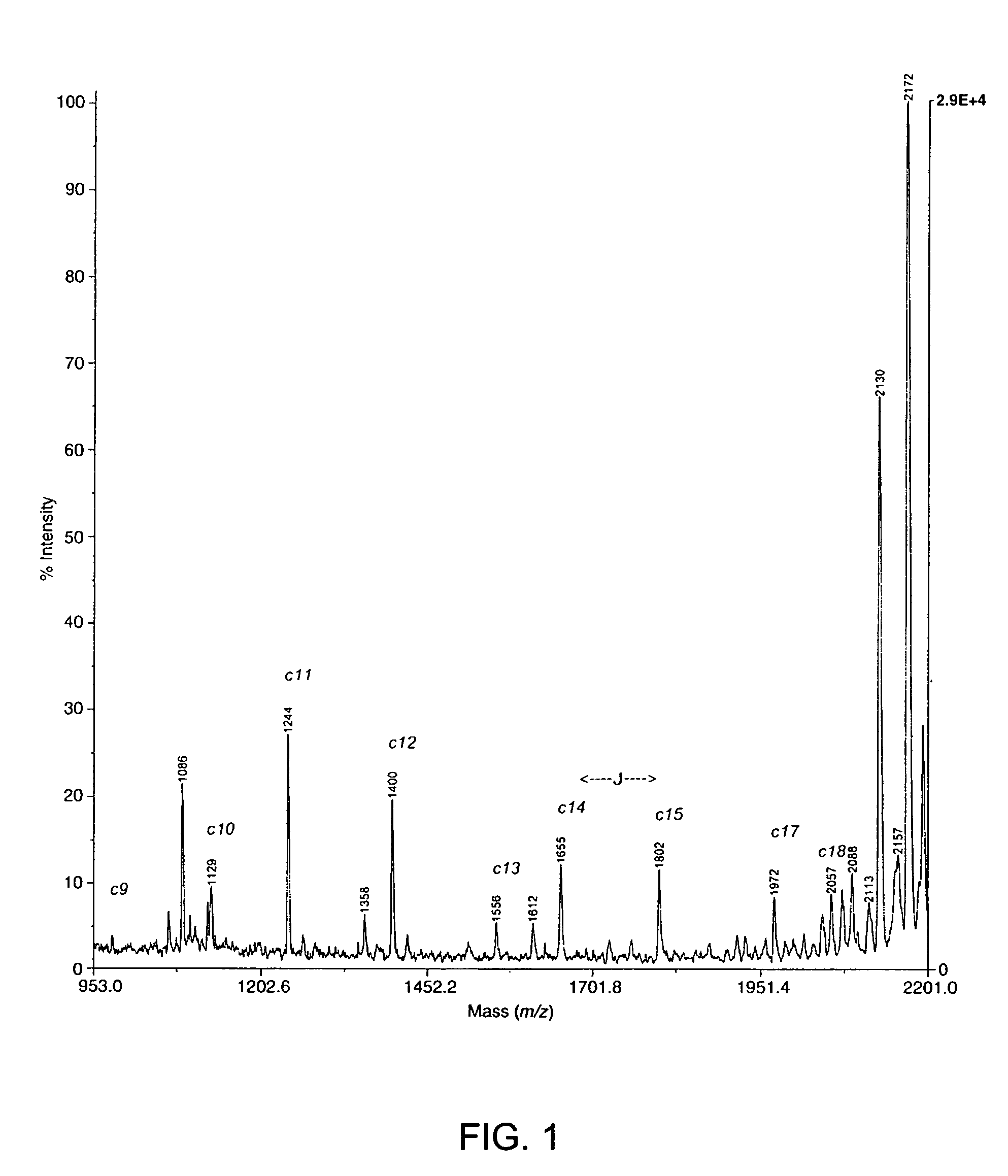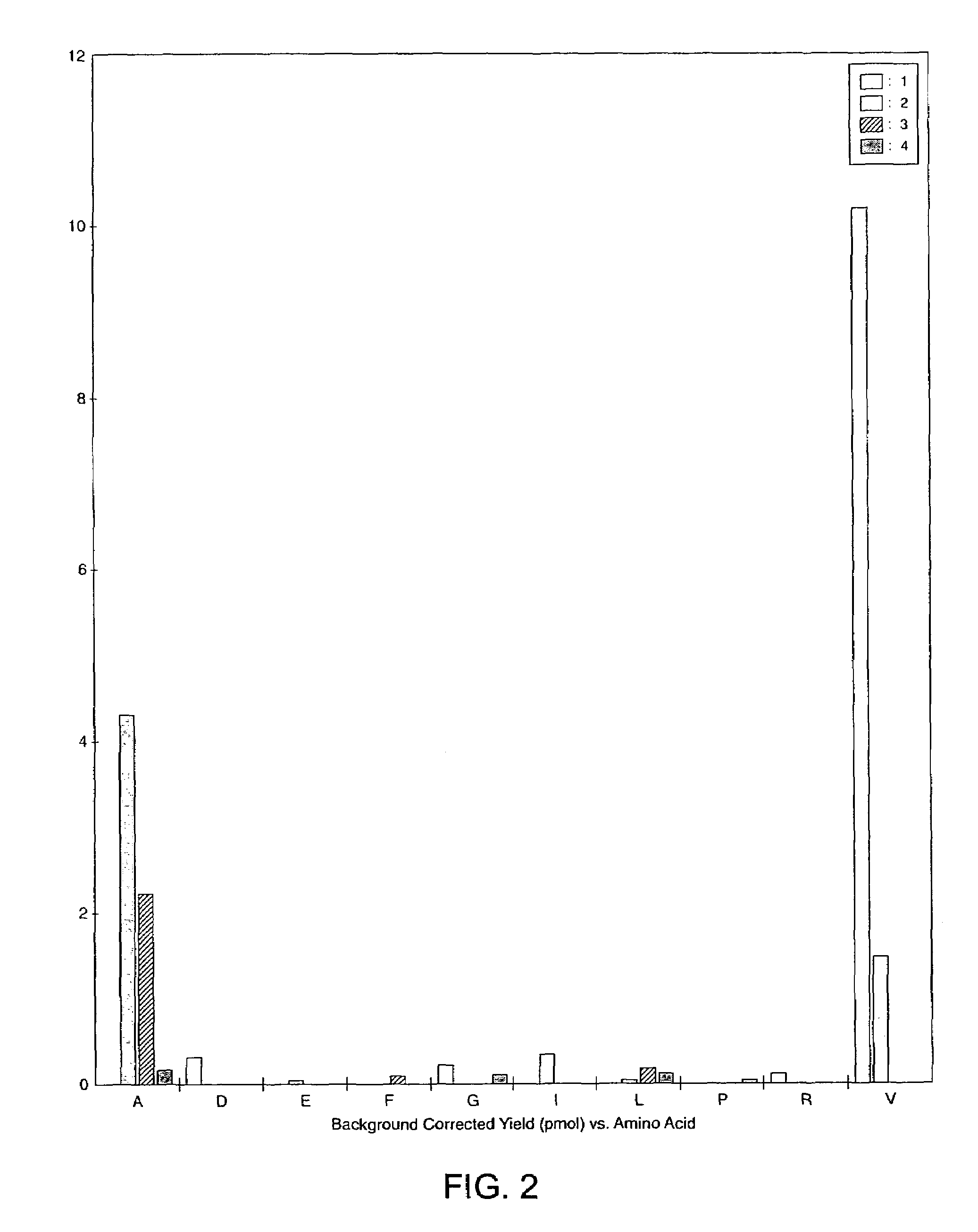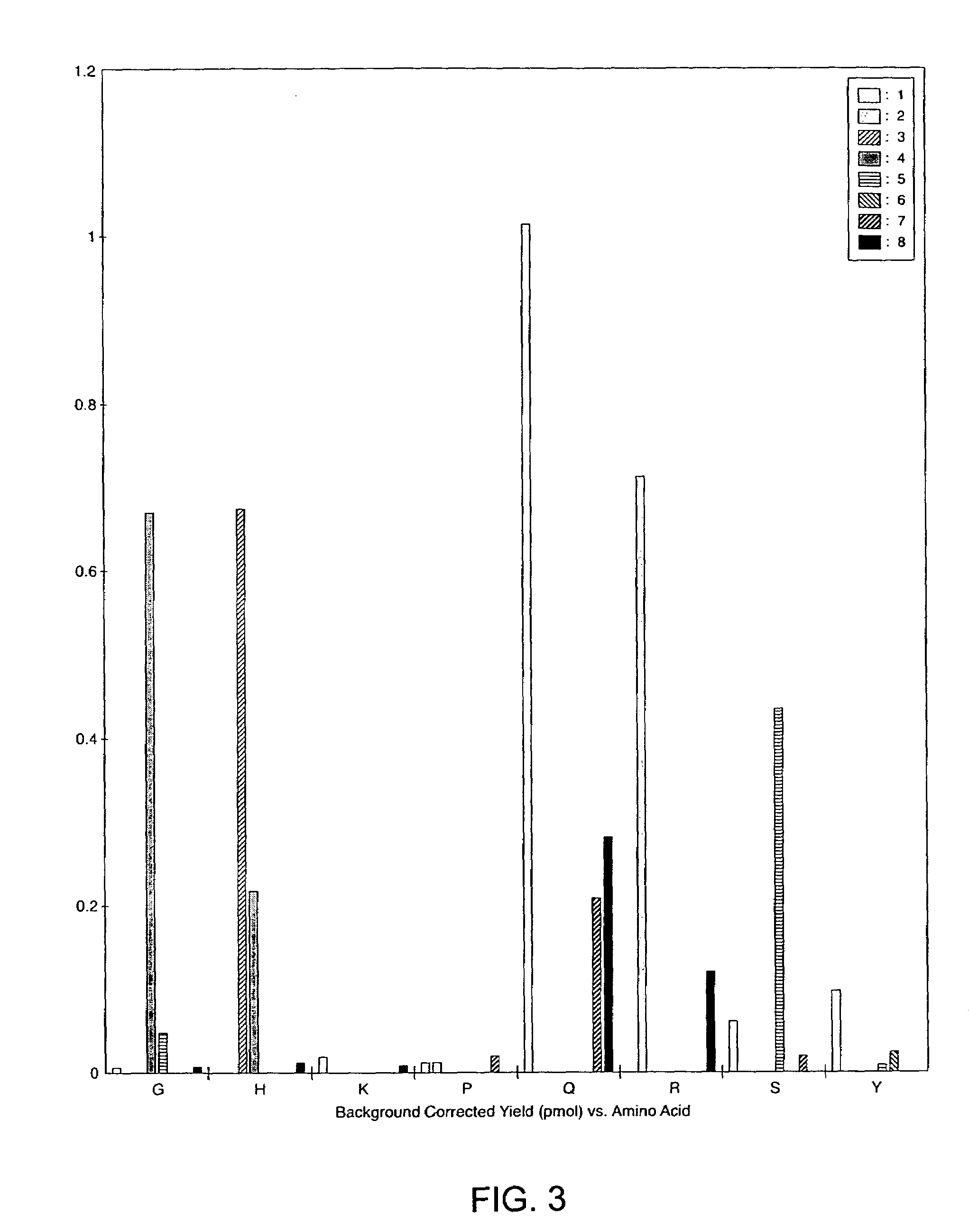Chemically targeted positional identification of post-translationally phosphorylated peptides
a phosphorylation and positional identification technology, applied in the field of chemically modifying a peptide, can solve the problems of difficult glycosylation, limited cell analysis methods, time-consuming, tedious, etc., and achieves the effect of suited only to relatively short phosphopeptides
- Summary
- Abstract
- Description
- Claims
- Application Information
AI Technical Summary
Benefits of technology
Problems solved by technology
Method used
Image
Examples
example 1
Chemically Targeted Identification of Phosphoamino Acids and O-Glycosylated Amino Acids in Peptides
[0063]This example demonstrates that chemical modification of post-translationally modified amino acids in peptides and cleavage at the position of the chemically modified amino acid residues allows the identification of phosphorylated and glycosylated amino acid residues in peptides.
[0064]Phosphatase substrate (PS) and protein kinase C substrate (PKC) phosphopeptides were obtained from Anaspec Labs (San Jose, Calif.). Calcineurin substrate (CNS) was obtained from Calbiochem (San Diego, Calif.). Lysyl endopeptidase from Achromobacter lyticus (E.C. 3.4.21.50) was purchased from WAKO Chemicals (Richmond, Va.). N-Hydroxysuccinimide and 2-amino-ethanethiol hydrochloride (2-AET) were from Sigma-Aldrich Chemical Co. (St. Louis, Mo.). The O-threonine glycosyl peptide was obtained from Nathan Lamarre-Vincent of the Hsieh-Wilson laboratory at Caltech (Pasadena, Calif.). The O-serine glycosyl pe...
example 2
Chemically Targeted Identification of Phosphoamino Acids in a Phosphoprotein
[0113]This Example demonstrates that the chemically targeted identification method can be extended to the examination of phosphoproteins.
[0114]Post-translationally modified peptides often fail to give complete product ion spectra by tandem mass spectrometry, with increasing peptide chain length exacerbating the problem to the point where little or no useable structural information is obtained. In order to determine whether the chemically targeted identification method could be used to analyze longer peptides, the method was applied to a β-casein tryptic digest. Precursor ion and neutral loss analysis detected multiple peptides. Three sites were positively identified, including residues 15, 17, and 35, and two additional phosphorylations were inferred from peptide mass in the multiply phosphorylated N-terminal region of β-casein.
[0115]β-casein peptides were prepared by denaturing β-casein in freshly deionized...
PUM
| Property | Measurement | Unit |
|---|---|---|
| Mass | aaaaa | aaaaa |
Abstract
Description
Claims
Application Information
 Login to View More
Login to View More - R&D Engineer
- R&D Manager
- IP Professional
- Industry Leading Data Capabilities
- Powerful AI technology
- Patent DNA Extraction
Browse by: Latest US Patents, China's latest patents, Technical Efficacy Thesaurus, Application Domain, Technology Topic, Popular Technical Reports.
© 2024 PatSnap. All rights reserved.Legal|Privacy policy|Modern Slavery Act Transparency Statement|Sitemap|About US| Contact US: help@patsnap.com










